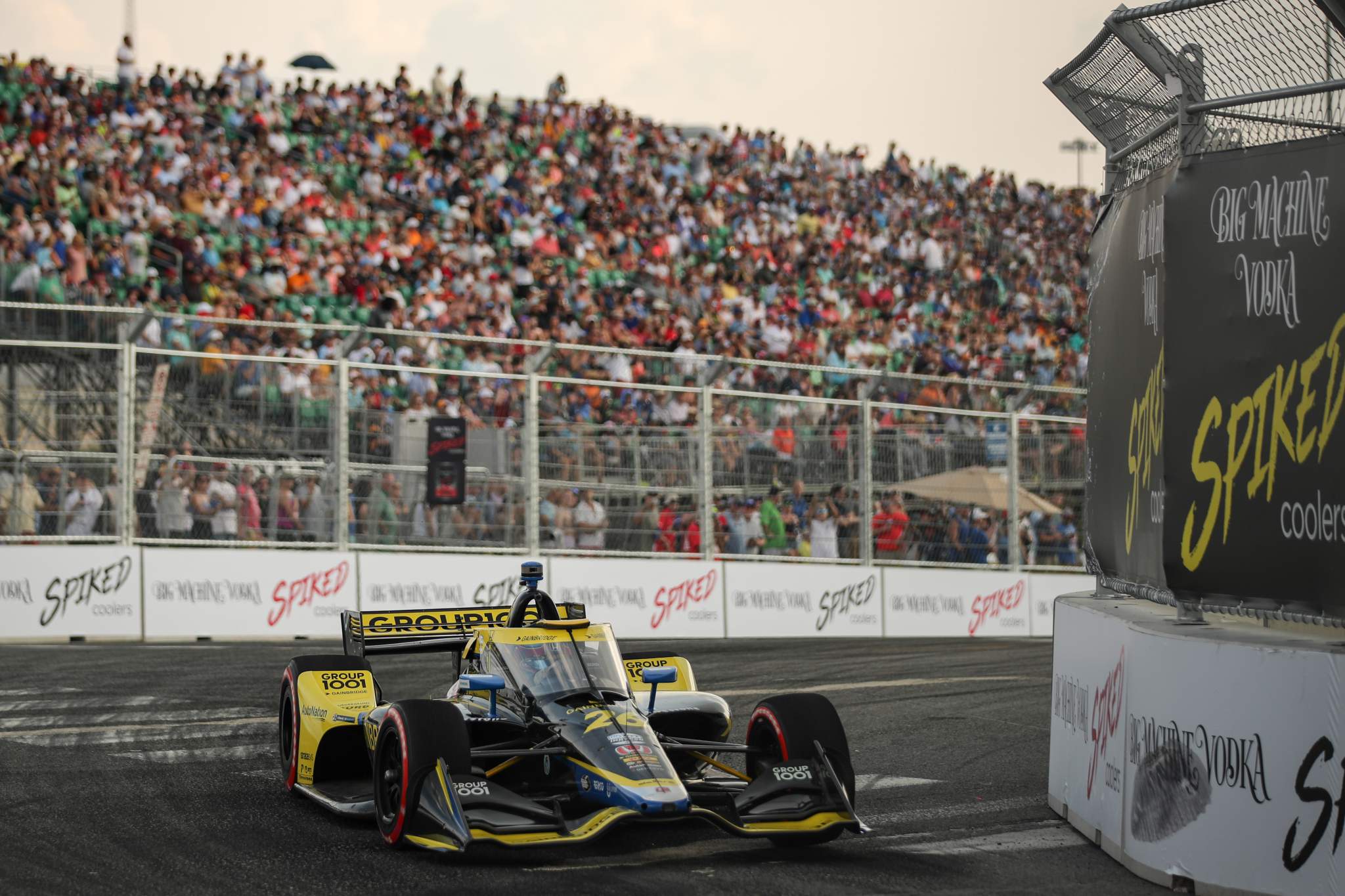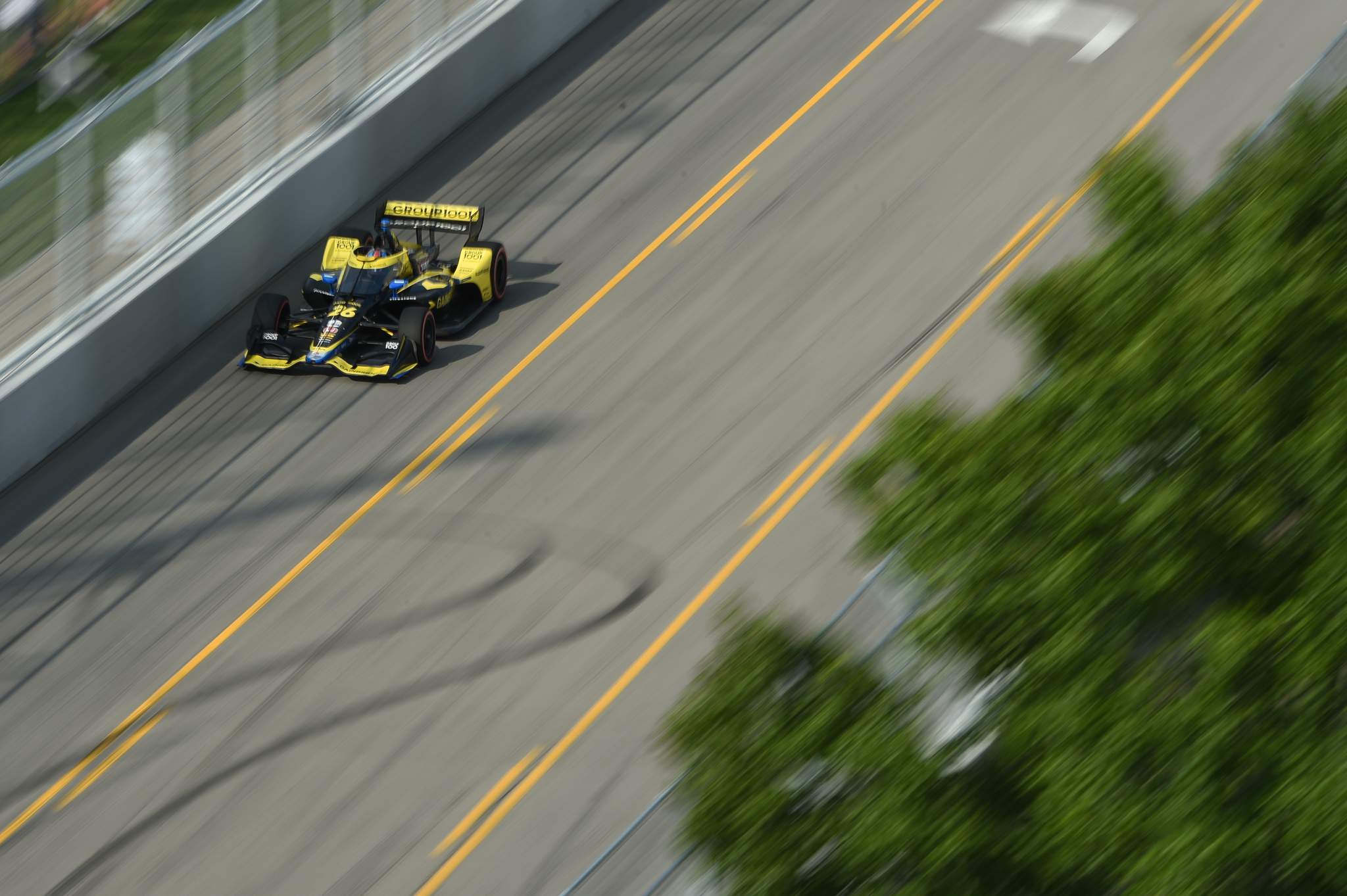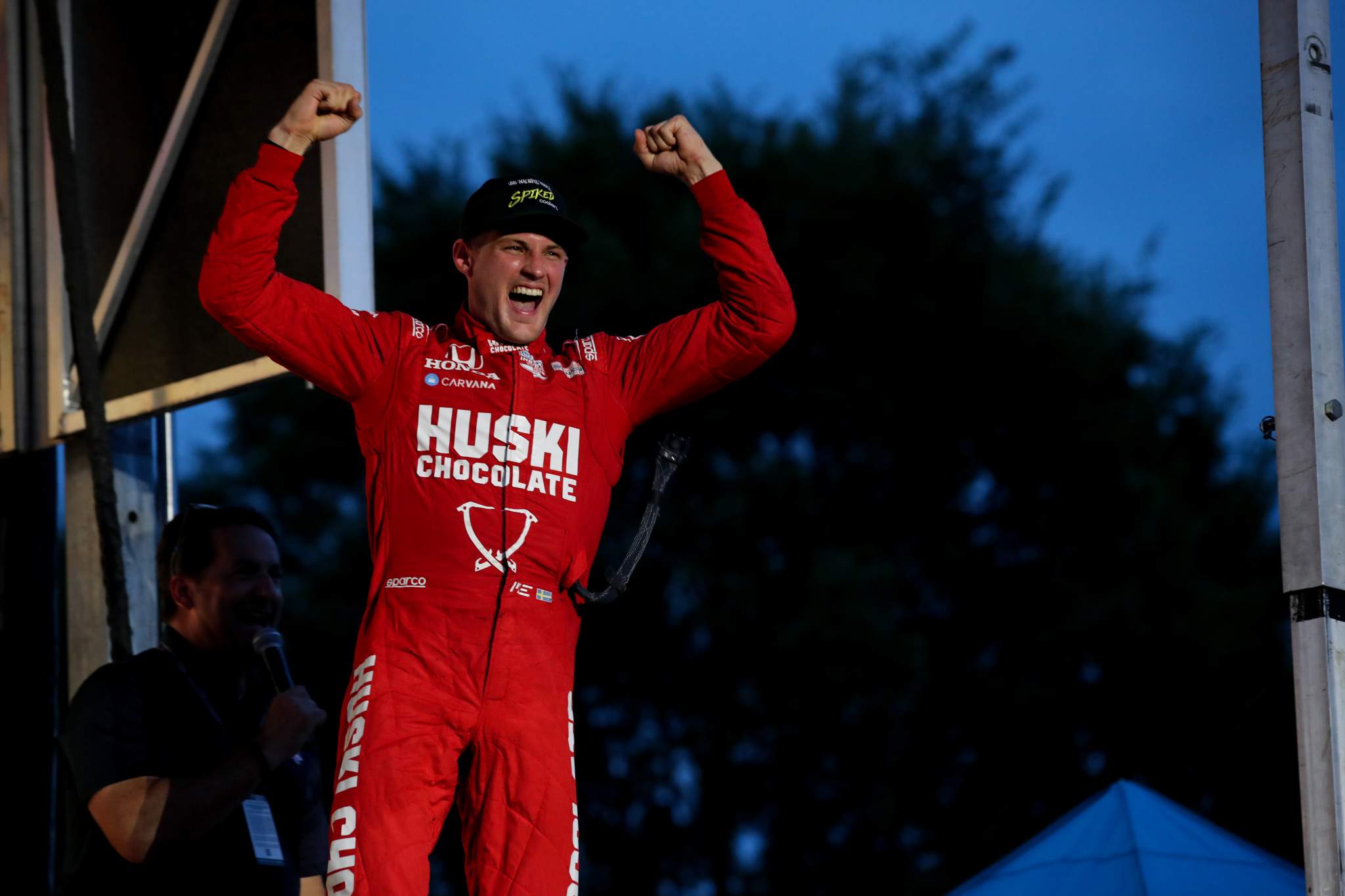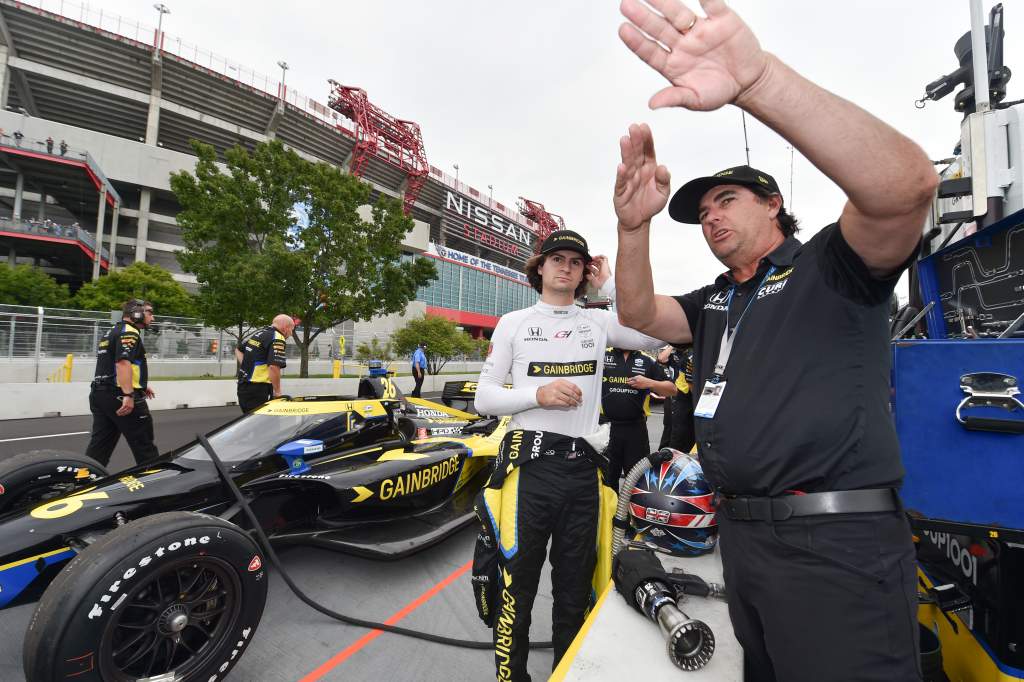Colton Herta was the class of the IndyCar field in Nashville.
Even all of the madness of the most bizarre and eventful races in recent memory couldn’t stop him; he did that all by himself by crashing at Turn 9 with six laps remaining.
Earlier this year, the Andretti Autosport driver won from pole in St Petersburg, where he led almost every lap in a win so convincing that talk immediately turned to when he’d end up racing in Formula 1!
Fast forward to Nashville and Herta showed a similar level of prowess. It was arguably even more impressive here because all of the drivers were on an even playing field coming to a new track, and Herta topped both practices and had the biggest pole margin of the year so far with an epic qualifying performance.
Even better than the lap that scored him pole was his lap in the very first qualifying group, which was the fastest lap of the weekend so far and came on the harder tyre while no one could best him on the faster softs. This gave Herta an extra set of softs for his pole attempts, which proved key.
It’s no surprise to see him do well in qualifying, he has the best average starting position per race this year, but he was clearly performing at a level clear of the opposition in Tennessee.
In the race, cautions worked against him to the point where he twice surrendered the lead. The first time, he made passes on his team-mates on consecutive laps at the restart, including on Ryan Hunter-Reay at Turn 8, the tightest on the track where few dared to overtake and which showed Herta’s confidence and cunning.

Underpinning his ability was how much later on the brakes he was. I watched onboard with Herta later in the race and – while I obviously couldn’t observe every driver’s onboards for every lap – it certainly looked like Herta was often 10-20 metres later on the brakes even than most of IndyCar’s top drivers.
After losing the lead due to pitstop timing later on, Herta again made rapid moves, passing Hunter-Reay, at Turn 8 again, and James Hinchcliffe on consecutive laps before teeing up a gorgeous move on Scott Dixon to dive down the inside of Turn 9 while Dixon locked up on older tyres.
At this point, Herta had only 10 laps on his tyres compared to leader Marcus Ericsson’s 17, and should have known with his pace that he had the advantage.
But it’s here his race totally unravelled.
Having been upset at various situations earlier in the race – which is understandable as he was easily the fastest car and strategies had transpired against him – Herta became more and more exasperated on the radio.
Usually totally calm on the radio, he barked for more updates on how much push-to-pass Ericsson had left as the Ganassi driver used all of his street racing experience to save fuel in the tight corners and get good runs off the corner exits leading onto straights to keep Herta behind.
Herta knew Ericsson was saving fuel, but Herta clearly felt time was running out.
With nine laps to go he came from way too far back to try a move on Ericsson at Turn 9, but braked too late and it required all his skill to stay out of the wall.
Herta’s not afraid of walls. He clipped them multiple times across the St Pete weekend he dominated and he always appears to be on a knife edge when it comes to street circuits.
Perhaps this highlights a flaw Herta needs to deal with quickly if he’s to win a championship in the future.
He may be blisteringly quick, but you don’t score points for being in the wall and the lock-up with nine laps to go was a warning to Herta, one that he didn’t heed.

With six laps to go, he crashed at the same corner after locking his right front.
He wasn’t making any excuses afterwards.
“Tunnel vision, man. I feel terrible,” he told NBC. “We had the car all weekend to win and I just threw it away so I feel really bad.
“I’m OK, I know that I didn’t get my hands off the wheel but they’re OK.
“I don’t really have anything to say, this place is brutal, I think we saw that.
“Congrats to Marcus, he drove a hell of a race at the end, I didn’t think he was going to make it and he just kept pulling away from me. So good job to him.

“I feel terrible for the team and everybody involved, [sponsor] Gainbridge, Honda. Yeah, it was terrible on my part.”
Herta has been absolutely brilliant in IndyCar at working on his weaknesses. After his rookie year where he won two races but was wildly inconsistent, in 2020 he improved on that. In 2021 he’s worked on places he felt he could be better from the year before, mostly in saving fuel and tyres.
Even if he did feel like time was running out as his initial attempts to pass were unsuccessful, given he had fresher tyres surely backing off and holding station until five or so laps to go would have been the best time to properly pressure Ericsson given the circumstances? We’ll never know.
It’s criminal Herta didn’t win this race given his speed, but the warning signs have been there for him in the past and they were again this weekend. There’s a limit, and once you pass that limit, there’s no coming back from it. He was so close to the wall multiple times in Turn 9 and eventually it was too close.
Perhaps he’ll accept this error as one that came while he was out of championship contention and gambling to win a race is worth it under these circumstances, and he’ll make a different decision in a alternative scenario.
Either way, it was heartbreaking not to see Herta win this race, but a reminder that he is human and despite being on another level to the opposition last weekend, it’s never as simple as just being fast in IndyCar.







